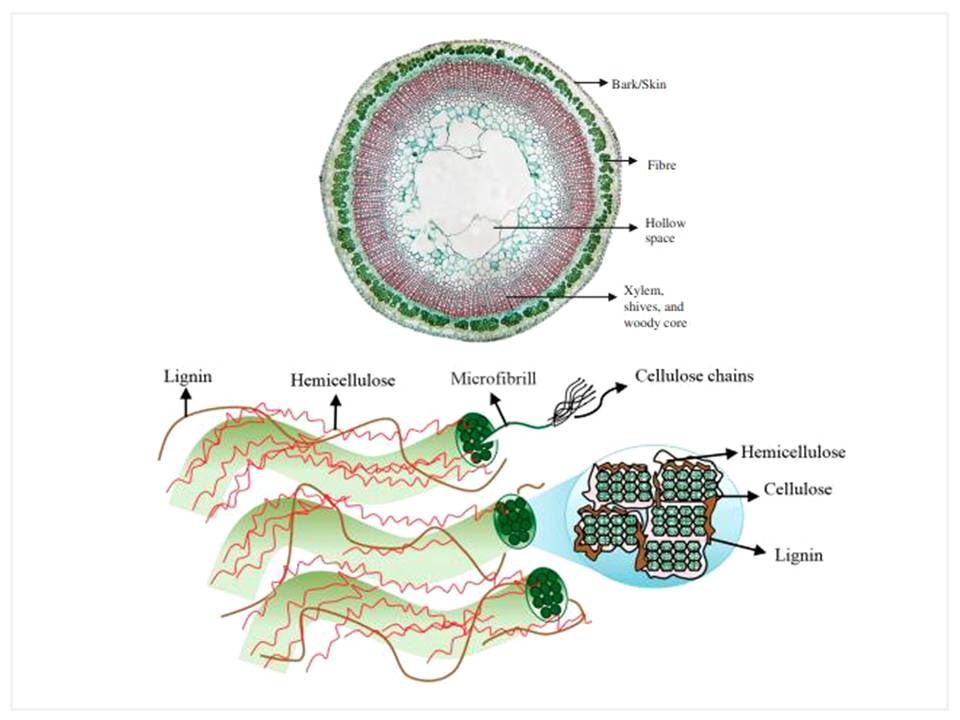Title
Surface Modification of Bast Fiber Yarns for Technical Textile and Composite Applications via Chemical and Enzymatic Treatment
Authors
Alhayat Getu TEMESGEN*a and Omprakash Sahu*b
aDepartment of Textile Engineering, Institute of Technology, Wollo University, Ethiopia.
bDepartment of Chemical Engineering, UIE Chandigarh University, Mohali, Punjab, India.
*Corresponding author E-mail address: mottaget@gmail.com (A. G. TEMESGEN); ops0121@gmail.com (Sahu)
Article History
Publication details: Received: 28th February 2021; Revised: 26th May 2021; Accepted: 11th June 2021; Published: 16th July 2021
Cite this article
Temesgen A. G.; Sahu O. Surface Modification of Bast Fiber Yarns for Technical Textile and Composite Applications via Chemical and Enzymatic Treatment. Green Rep., 2021, 2(5), 6-11.

Abstract
Flax and enset yarn are obtained from lignocelluloses bast fibers which are composed of cellulose, hemicellulose, lignin, wax and water soluble components. The abundance of these fibers combined with the ease of their biochemical modifications can be used in technical textile and composite industries to substitute petrochemical fibers that were potentially toxic and polluted the world ecology. In this research work, the surface modification and structural characterization of flax and enset yarns were studied by different types of biochemical treatments. 3 different concentrations of caustic soda, alfa amylase enzyme and aloe vera gel were used for this study. The test result revealed that, tensile strength of flax yarn was improved by 40 % while the tensile strength of enset yarn was improved by 21% when treated with optimum level of biochemical. Moreover, biochemical treatment of these bast yarns were improved their moisture absorption properties of the yarns. The maximum weight loss of flax was 8.9 % while enset yarn 8.3 % weight loss were observed when the yarns were treated with optimum concentration of both alkali and amylase enzyme. Nevertheless, alkali or enzymes used beyond the desired concentration and amount were significantly affecting the mechanical strength with large percentage of weight loss.
Keywords
Biochemical treatments; Composite; Enset yarn; Flax yarn; Surface modification; Technical textile